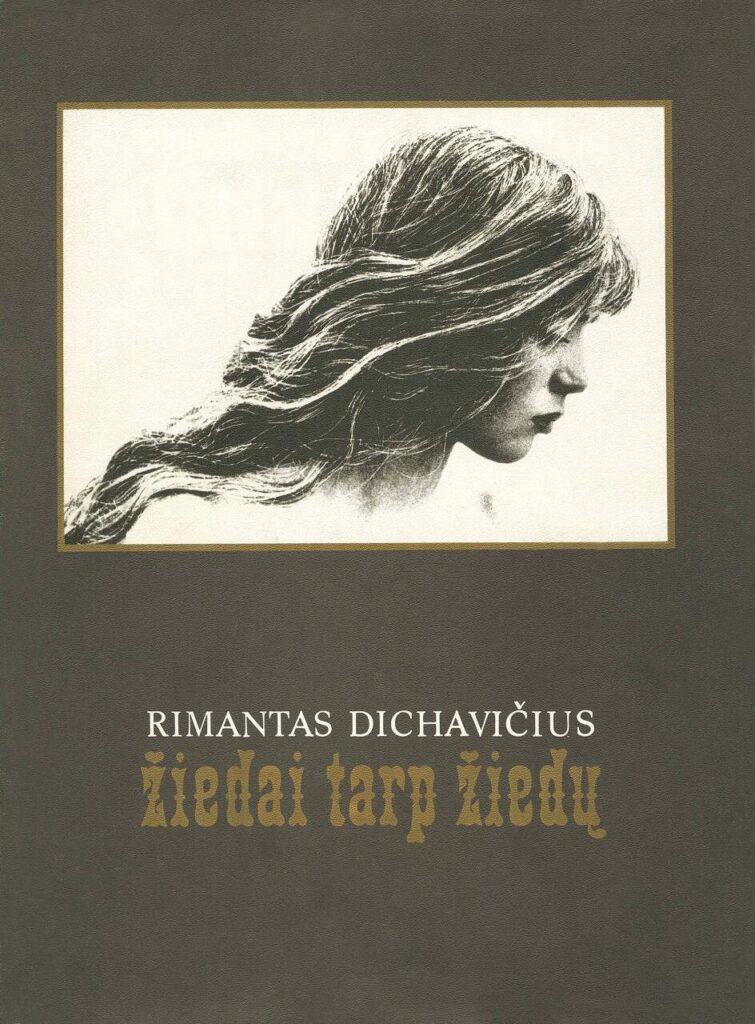Rimantas Dichavičius

Rimantas at his childhood home in the village of Grimzeliai, which he visited for the first time after returning from exile. 1969.

Rimantas near Raseiniai.

1969.

1969.
Photography was called a passion by R. Dichavičius—it’s something you see and want to show others. Thanks to his meticulous and persistent work, we can now see not only images of old Vilnius in his captured frames. The first significant cycles in his creative biography appeared—photography exhibitions LITHUANIAN ETHNOGRAPHY (1969) and IN THE WORLD OF FORMS (1970).


Since 1978, the artist chose the path of a free creator, working in the fields of artistic photography, painting, book illustration, advertising, design, and publishing.
His nude photography album BLOSSOMS AMONG BLOSSOMS (1987, 1988, 1989, 1990) sparked various reactions and immense public interest not only in Lithuania but throughout the entire Soviet Union, Germany, France, and beyond. It was an unexpected sign—the taboo of the naked female body, seen as something shameful and unacceptable for a Soviet citizen, was broken for the first time not only in photographic art. The BLOSSOMS AMONG BLOSSOMS photo album in black-and-white photography exalts youth, its beauty, transience, and fragility. Art and artistic creation are always delicate processes. In the genre of the nude (Niu), it is especially sensitive and delicate—subject to both written and unwritten laws of morality and aesthetics. In this subtle genre, R. Dichavičius’ works met all the highest criteria. His exhibition BLOSSOMS AMONG BLOSSOMS toured the entire former Soviet Union and many European countries, as well as the United States—Chicago and Los Angeles. His photo album with the same title was reprinted four times and was acquired by many countries, including China.


Rimantas with his wife Benigna, who became his first model, first wife, and the mother of Aras. 1962.


Rimantas at the Orvidas homestead in 1969.
The artist continues to work intensively, with photo albums-calendars TALENT AND HEART M. K. ČIURLIONIS AND TODAY (1997–2003) appearing in the public space. These are large-format and high-quality publications featuring the most renowned Lithuanian artists from various professions. The author honored and showcased the work of more than a hundred artists. In our artistic life, the monographs on the works of artists have become very significant: ŠARŪNAS SAUKA (2001), ANTANAS KMIELIAUSKAS – painting, graphics, sculpture, fresco (2001, 2003), which were highly praised at the international Frankfurt Book Fair.
In 2012, bookstores saw the release of a fundamental work prepared and published by R. Dichavičius—a collection of art albums titled MARKED BY FREEDOM. Artists for the Restored State of Lithuania (first volume). The second volume followed in 2013, and the third in 2016. These large-format, high-quality publications, each with 400 pages and around 5000 illustrations, tell the story of the artists in our country who created the symbols of the newly restored Lithuanian statehood: heraldry, currency banknotes and coins, stamps, insignia for the military, police, customs, border services, and other agencies, uniforms, state awards, monuments, mayoral regalia, and liturgical items.


Three albums dedicated to the works of Lithuanian artists that marked the days of our nation’s Sąjūdis movement, the restoration of the State, and its establishment in the world arena.
214 authors, 1240 pages, over 5000 works from all art genres. Published between 2012 and 2016.
The artist has illustrated and designed over 300 various publications, including more than 30 albums. Rimantas Dichavičius’ works include: LITHUANIAN HISTORY IN THE PAINTINGS OF GIEDRIUS KAZIMIERĖNAS; ŽALGIRIS (G. KAZIMIERĖNAS), HELL SONGS (G. KAZIMIERĖNAS), Gytis Vaitkūnas HISTORY OF LITHUANIAN AESTHETICS; the album of graphic works by Belarusian artist J. Jakovenko LINEA MAGICA; Juozas Bertulis CHURCH MUSIC – the creative legacy of an émigré composer; BALTIC AMBER – album-calendar; LIGHT OF FREEDOM – a photo album dedicated to the 15-year activity of the Lithuanian Political Prisoners and Deportees Association (2012), his brother Jonas Dikavičius’ memoir AFTER A RESTLESS NIGHT (2022), THE HISTORY OF THE DICHAVIČIUS, GRUZDŽIAI, SEMENAVIČIUS FAMILIES (2023).




For his high artistic standards, professionalism, and active public engagement, V. R. Dichavičius was awarded the Officer’s Cross of the Order of the Lithuanian Grand Duke Gediminas (2007), the Estonian Order of the White Star (2004), the highest award from the Lithuanian Political Prisoners and Deportees Association—the Star of Hope (2012), and the Zigmas Žemaitis Medal from the Lithuanian Mathematical Society (2009).

@ All rights reserved




